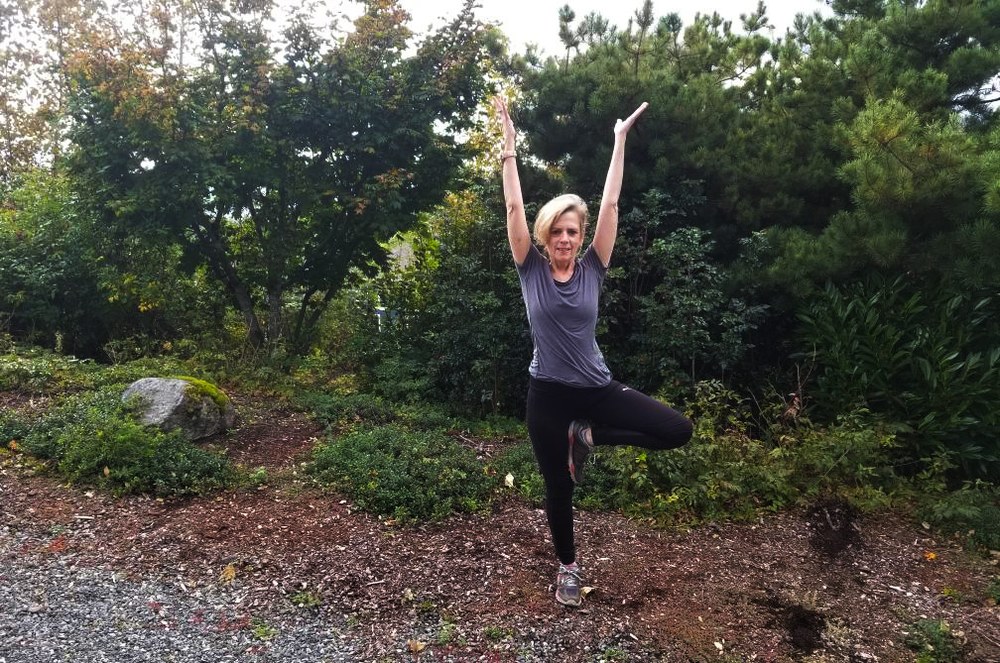
You’re invited to participate in the Foothills branch’s newest course, Yoga for Hikers, Backpackers, and Trail Runners. Designed for outdoor athletes, this course will cover the fundamentals of yoga, how to utilize the practice for athletic recovery, and how to utilize the practice for strength.
We will be offering one online workshop in late July, followed by two in-person yoga clinics in early and mid-August. Yoga is an excellent way for recreationists to become more in tune with their bodies, build strength, and develop a mindfulness practice. Read on to register and learn more about how the practice can benefit your outdoor life.
Why Choose Yoga as an Outdoor Athlete?
There are so many great reasons for outdoor athletes to start a yoga practice. Many people are already aware of the incredible physical benefits of yoga like building strength, becoming more flexible, supporting recovery from challenging adventures, and creating more balance within the body. But yoga can also be a path to self-awareness, which is just as beneficial to outdoor athletes as any of the physical benefits.
Many people today think of yoga primarily as a physical practice. So, it’s reasonable to wonder how stretching or contorting your body leads to anything but extreme discomfort! Understanding the history of yoga can help us appreciate the multi-faceted nature of the practice, and place it within a cultural context.
As you likely know, yoga originates from India. The sage Patanjali was the first to codify the practice, synthesizing and compiling existing knowledge and practices from various traditions into the “Yoga Sutras” around 200 BC. The Yoga Sutras state that “yoga is the stilling of the thought waves of the mind,” and that by stilling the mind, “the self can abide in its own true nature.” The sutras then go on to describe how to achieve this state of mental stillness and self-clarity. It includes eight steps, two of which are the practice of asana, or what most people commonly think of as yoga postures, and the practice of pranayama, or controlled breathing. Thus, yoga is not just a set of peculiar postures. These postures are just one part of a larger practice intended to lead the practitioner toward mindfulness and greater self-fulfillment.
And just how does holding a yoga posture lead you down this path? Well, maintaining a posture requires a lot of focus. Yoga students usually begin with focusing on their breath, and as their minds focus, extraneous thoughts dissipate. After all, you can’t hold a steady pose if you’re thinking about what you’ll make for dinner or whether your co-worker’s mad at you. Instead, you become more aware of what’s happening in your body here and now. You begin to notice how you feel. Maybe some muscles are tight while others are engaged, sore, or tired. You may notice new things, like imbalances in your body. One side may be stronger or more flexible. Or maybe your legs feel strong, but your core feels challenged in some postures. You also begin to notice how your body is aligned. Is your spine long and straight or do you tend to hunch? Is your pelvis level or tilted? Is your knee aligned with your hip and ankle or does it turn inward?
So, now that you’ve noticed all these physical quirks, how does that help you as an outdoor athlete? Many overuse injuries are caused by the muscular imbalances yoga helps you identify. Through yoga you can become more aware of fatigue, imbalances, and tightness before they lead to injury. You can also use yoga to help address these imbalances, because yoga poses employ many major muscle groups and complementary muscles.
You’ll also take that body awareness off the mat. Yoga’s focus on physical alignment promotes better form over longer distances, helping to keep you on your feet and prevent injuries while you’re enjoying the outdoors. The focus and concentration you develop will help you listen to your body while you’re on the trail, so that you can understand when you can push hard and when you need to take the intensity down a notch. You’ll be more aware of when your body needs things like rest, hydration, or relaxation. And what better way to relax and recover from a strenuous day in the mountains than with a few restorative yoga poses?
 Lori Heath
Lori Heath